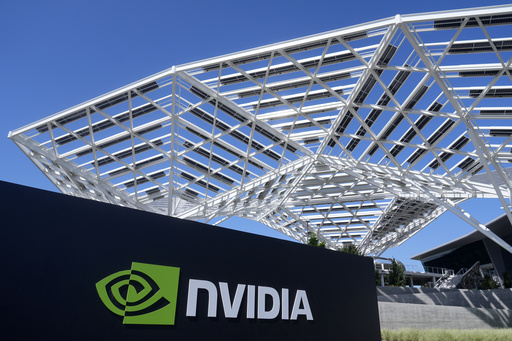
LOS ANGELES — Nvidia announced a substantial increase in its profit and revenue for the third quarter on Wednesday, attributing this growth to the heightened demand for its specialized chips that drive artificial intelligence (AI) systems.
For the quarter ending on October 27, the prominent tech firm, located in Santa Clara, California, reported a staggering revenue of $35.08 billion, reflecting a remarkable 94% increase compared to $18.12 billion from the same period last year.
The company’s earnings reached $19.31 billion for the quarter, which is more than double the $9.24 billion recorded in the previous year’s third quarter. When adjusted for one-time items, Nvidia’s earnings were reported at 81 cents per share.
Wall Street had forecast adjusted earnings of 75 cents per share along with revenue of $33.17 billion, according to estimates from FactSet.
Despite the outstanding earnings report, investors reacted cautiously, resulting in Nvidia’s stock falling by roughly 1% in after-hours trading. Nonetheless, shares in Nvidia Corp. have surged by 195% this year to date.
Jensen Huang, the founder and CEO of Nvidia, remarked, “The age of AI is in full steam, propelling a global shift to Nvidia computing,” signifying the company’s strong role in the ongoing transition to AI technologies.
Analysts have been focusing on Nvidia’s projections regarding its next-generation Blackwell graphics processor unit, an advanced AI chip that’s generating significant interest from firms like OpenAI and others establishing AI data centers. The company recently announced plans to ramp up production of these chips starting in the fourth quarter and carrying through fiscal year 2026.
Huang, in a recent interview with CNBC, described the demand for Blackwell chips as “insane,” stating, “Everybody wants to have the most and everybody wants to be first.”
Nvidia has positioned itself as a leader in the AI sector, becoming one of the most significant companies in the stock market as major tech corporations invest extensively in its chips and data centers essential for developing and operating AI systems.
The company capitalized on its early advantage in AI applications, largely due to Huang’s strategic focus on the chip technology that powers the industry. Nvidia’s history of bold innovations includes the introduction of graphics processing units (GPUs) in 1999, which catalyzed the expansion of the PC gaming market and transformed computer graphics.
A surge in demand for generative AI products, which are capable of creating documents, designing images, and functioning as personal assistants, has significantly boosted sales of Nvidia’s specialized chips over the past year. Currently, Nvidia is the most valuable publicly traded company by market capitalization, valued at over $3.5 trillion, with market watchers closely observing its trajectory toward a potential $4 trillion valuation.
During the initial six months of the year, Nvidia’s stock experienced a remarkable rise of nearly 150%. At that juncture, the stock was trading at more than 100 times the company’s earnings over the preceding 12 months, a valuation significantly higher than its historical averages and the broader S&P 500 index.
